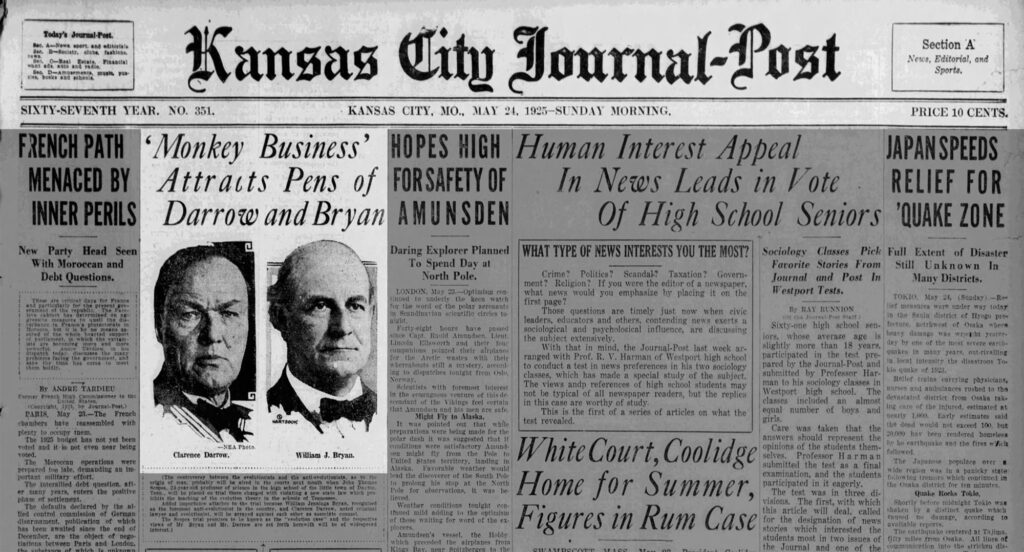
In May 1925, William Jennings Bryan and Clarence Darrow agreed to take part in the historic Scopes “Monkey” Trial, setting the stage for a dramatic confrontation between fundamentalist religion and evolutionary science. Their participation turned the trial into a national spectacle, highlighting the cultural clash of the era.
One might compare the hype leading up to, and the eventual courtroom showdown between Darrow and Bryan, to the first Dempsey-Tunney fight, which took place on September 23, 1926, just over a year after the trial. However, that fight took place in Philadelphia, a major metropolitan city, at Sesquicentennial Stadium, before a crowd exceeding 100,000. Dayton, Tennessee, on the other hand, the backdrop of the Scopes Trial, had a population of only 1,800 in 1925.
A more fitting boxing analogy might be the May 25, 1965, Muhammad Ali (still known as Cassius Clay) vs. Sonny Liston fight, held in Lewiston, Maine — a place that was almost as unknown to the rest of the world as Dayton, Tennessee, was in 1925. The fight in Lewiston took place at the Central Maine Youth Center before a “crowd” of 2,434 people.
The Scopes Trial and the 1965 Ali-Liston rematch share more than just their improbable settings.
The image of Ali standing over Liston became one of the most iconic photographs in sports history. Likewise, the Rhea County Courthouse in Dayton held only a few hundred people, but the cultural clash inside that building reverberated across the world.
Both events were more than contests between individuals. In 1925, science clashed with fundamentalism. In 1965, it was not so much a struggle between philosophies as it was a contrast in styles. On one side stood Sonny Liston — silent, brooding, a symbol of brute force and old-school menace – in comparison to Muhammad Ali — fast-talking, dancing, and utterly unwilling to play by the old rules.
Leave a Reply